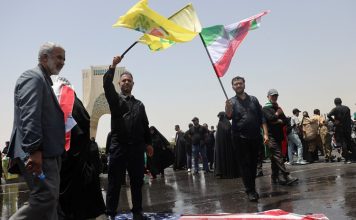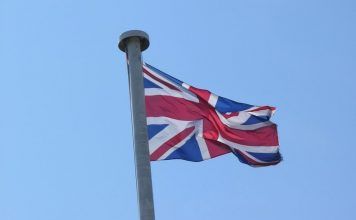By Kayhan Life Staff
The Majlis (Iranian Parliament) has established a working group to investigate the recent wave of apparent toxic gas attacks on girls’ schools in several Iranian cities.
The chair of the Majlis’ Education, Research, and Technology Commission said students were “poisoned.”
How desperate is a regime, if it allows poisoning of school girls (or even orders it)?
How weak is a regime, if it shows videos of rape in schools to intimidate girls?
And how far will such a regime go to tame this revolution?
Don’t look away. They kill in darkness. #Iran pic.twitter.com/gOhBtRD5vt
— Hannah Neumann (@HNeumannMEP) March 2, 2023
Domestic and foreign media have reported extensively on the suspicious gas poisoning of schoolgirls in Iran, which started at girls’ high schools in Qom, 140 kilometers south of Tehran.
There were then reports of similar incidents in girls’ schools in Tehran and Ardabil, the capital of the northwestern province of Ardabil.
Borujerd, in the western province of Lorestan, has reported the country’s second-largest case of school poisoning.
Yunis Panahi, the Deputy Minister of Health and Medical Education for research and technology, described the “poison attacks” as “deliberate.”
“It has been determined that it is not a war-grade chemical composition, and it is not contagious,” Mr. Panahi said. “Affected students do not require aggressive [medical] treatment. A large percentage of the chemicals in the poison are preventable.”
A week earlier, the country’s Attorney General, Jafar Montazeri, said students in Qom may have been “deliberately” poisoned.
Mr. Montazeri warned the Qom prosecutor that “the reports about the alarming poisoning incidents in education institutions in Qom indicate that it could have been a deliberate criminal act which requires a thorough investigation.”
“As a prosecutor advocating the rights of the public, you must launch an official and thorough investigation immediately,” he added.
Some have suggested that extremists in the Islamic Republic regime have conducted the poison attacks to retaliate against schoolgirls who have played a significant role in the widespread protests sparked by the death of Mahsa (Zhina) Amini, a 22-year-old woman who died while in the custody of the morality police on Sept. 16 in Tehran.
Since then, the protests have morphed into a national uprising and a “revolutionary movement.”
The first instance of poisoning was reported at the girls’ Nour Academy in Yazdanshar, in Qom Province.
US Urges Iran To Investigate Reported Poison Attacks on Girls #kayhanlife https://t.co/5zamdSWwgV pic.twitter.com/h4q6EqzWrT
— Kayhan Life (@KayhanLife) March 2, 2023
US Urges Iran To Investigate Reported Poison Attacks on Girls
Since then, there have been many new incidents of mysterious gas poisoning in various Iranian cities every week, affecting only schoolgirls.
On Feb. 19, Qom’s Fatemiyeh University of Medical Sciences said 11 students exhibited symptoms of poisoning, including “breathing problems,” “a burning sensation in throats,” and “nausea,” and were taken to hospitals and clinics.
It is unclear what has caused this widespread poisoning. Students affected have shown a wide range of symptoms, including shortness of breath, sudden drop in blood pressure, nausea, low energy, and numbness in the arm, hand, and leg muscles.
Some students’ health improved temporarily before they experienced the symptoms again.
Although the Judiciary has launched an investigation into the suspicious poisoning incidents, authorities have yet to find the cause of it.
Deputy head of the Judiciary, Mohammad Sadegh Kahnamoui, recently said: “The Qom prosecutor has allocated massive resources to the investigation of the incidents of poisoning in schools in Qom, but has discovered nothing specific yet.”
On 26 Feb, Mohammad Taghi Fazel Meybodi, a Qom Seminary Faculty and Research Council member, allegedly said that Hazaras, whose ideology was in line with the Taliban’s, could have carried the poisoning.
A day later, Mr. Meybodi denied having made those comments.
“I do not know why they misquoted me,” Meybodi argued. “I said one of my friends had compared these events to what happened in Afghanistan eight years ago when schoolgirls were reportedly poisoned. The Taliban, who were not in power, were accused of carrying out the poison attack on schoolgirls.”
Germany Calls for Probe of Reported Iranian School Girl Poisonings
A post on the Twitter account of Mowlavi Abdelhamid Esmaeilzahi, the Sunni Friday Imam of Zahedan, the capital of the southeastern province of Sistan and Baluchestan, on Feb. 25 said: “The poisoning of schoolgirls in Borujerd and Qom was an inhumane and anti-Islamic reaction to girls and women’s education and a revenge against their recent uprising.”
Since September, the student movement has been integral to the national uprising. Students have had a significant presence in street protests and schools, with many boycotting classes and participating in sit-ins.
Riot police, Basij (volunteer) militias, and security units have brutalized student protesters, detaining, and arresting many. Security units have injured and killed others using live ammunition to crush the protesters. Several students who were assaulted and tortured while in detention committed suicide after their release. Many students are reportedly kept in prison “reeducation and reform” units.
The student movement, led especially by girls in high school, has delivered a painful blow to the regime, prompting the authorities to resort to extreme measures to exact revenge.
Dr. Zahra Sheikhi, the spokesperson for the Majlis’ Health and Medical Commission, recently said: “The president of Qom’s [Fatemiyeh] University of Medical Sciences released a report saying that most students suffered mild [toxic] gas poisoning, with symptoms disappearing between 15 and 45 minutes. The symptoms are not permanent and go away after a while.”
“Undoubtedly [students] were poisoned. However, the exact cause is still unknown,” Dr. Sheikhi added.
Dr. Mohammad Saeed Rezaei, a clinical researcher, who manages the Scientometrics Telegram channel, has created a chart of schools affected by the recent poisoning, using available reports, which shows the incidents mostly occurred in Qom, Zanjan (northwest), Chaharmahal and Bakhtiari (southeast), Sari (north), Ardabil, Ghouchan (northeast), Torbat-e-Jam (northeast), Tehran, Borujerd and Ghazvin (northwest).
Atefeh Daneshgar, a journalist living in Qom, tweeted segments of her interviews with schoolgirls who were poisoned and their parents.
“Several students at Alzahra school in Qom reported a suspicious woman wearing a mask on the school grounds, said to be an inspector.,” Ms. Daneshgar said. “Maryam (not her real name) said: ‘We saw her go to the 7th grade [classroom] and the basement. Right after she left, we could see the air was filled with the odor of rotten fish. We all fell ill after that. We reported it to the school [officials], who said they were checking the cameras with members of the IRGC [Islamic Revolutionary Guards Corps]. However, we have received no explanation from the school after 15 days.’”
The Iranian Teachers’ Trade Association (ITTA) released a statement that said: “According to the International [Criminal] Police [Organization, Interpol], the recent poison attacks are bioterrorism.”
“There is a strong possibility that intimidating and scaring girls and their families is an attempt at erasing the achievements of the ‘woman, life, freedom’ movement,” the statement added.











